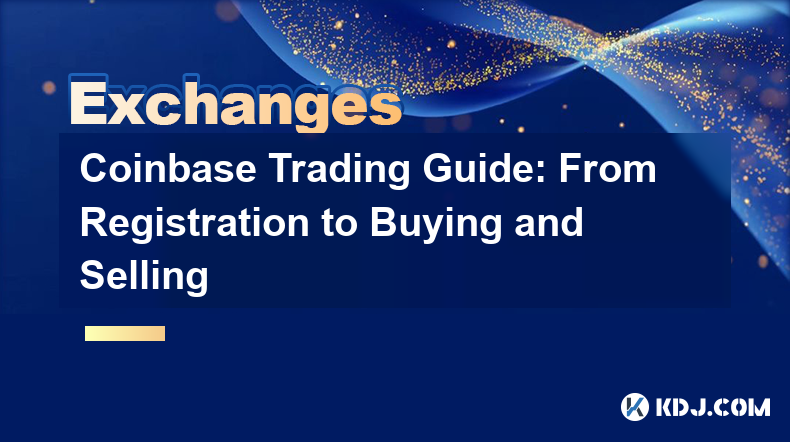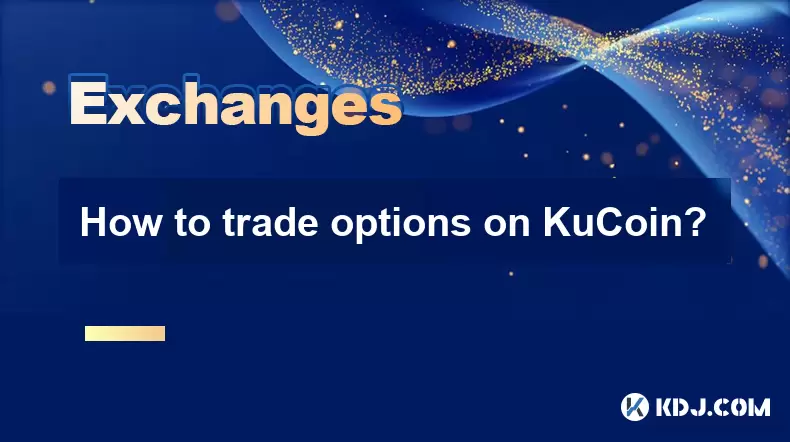-
 Bitcoin
Bitcoin $117400
-0.46% -
 Ethereum
Ethereum $3768
0.60% -
 XRP
XRP $3.551
2.09% -
 Tether USDt
Tether USDt $1.000
0.00% -
 Solana
Solana $203.2
11.30% -
 BNB
BNB $770.9
1.92% -
 USDC
USDC $0.9999
0.01% -
 Dogecoin
Dogecoin $0.2709
-0.02% -
 Cardano
Cardano $0.9024
4.49% -
 TRON
TRON $0.3139
0.60% -
 Hyperliquid
Hyperliquid $45.60
-1.41% -
 Stellar
Stellar $0.4730
-1.34% -
 Sui
Sui $4.025
2.15% -
 Chainlink
Chainlink $19.79
2.19% -
 Hedera
Hedera $0.2724
-2.39% -
 Avalanche
Avalanche $25.93
3.05% -
 Bitcoin Cash
Bitcoin Cash $524.0
-1.83% -
 Shiba Inu
Shiba Inu $0.00001558
0.50% -
 Litecoin
Litecoin $116.7
-0.30% -
 UNUS SED LEO
UNUS SED LEO $8.996
0.00% -
 Toncoin
Toncoin $3.334
1.83% -
 Polkadot
Polkadot $4.506
0.34% -
 Uniswap
Uniswap $10.99
4.83% -
 Ethena USDe
Ethena USDe $1.001
0.03% -
 Pepe
Pepe $0.00001461
3.17% -
 Monero
Monero $320.3
-1.01% -
 Bitget Token
Bitget Token $4.935
0.36% -
 Dai
Dai $0.9998
0.00% -
 Aave
Aave $322.4
-1.25% -
 Bittensor
Bittensor $455.6
9.33%
Coinbase Trading Guide: From Registration to Buying and Selling
Coinbase offers a user-friendly platform for trading various cryptocurrencies, guiding users from registration to executing trades with ease.
Apr 05, 2025 at 11:35 pm

Coinbase is one of the most popular cryptocurrency exchanges, known for its user-friendly interface and wide range of supported cryptocurrencies. This guide will walk you through the process of registering on Coinbase, setting up your account, and executing your first trades. Whether you're a beginner or an experienced trader, this comprehensive guide will help you navigate the platform with ease.
Getting Started with Coinbase
Before diving into trading, you need to create an account on Coinbase. The registration process is straightforward and can be completed in a few simple steps. Once registered, you'll need to verify your identity to comply with regulatory requirements. After verification, you can set up your payment methods, which will enable you to deposit funds and start trading.
Registering on Coinbase
To begin, visit the Coinbase website and click on the "Sign Up" button. You'll be prompted to enter your email address, create a password, and agree to the terms of service. After submitting your details, you'll receive a confirmation email. Click on the link in the email to verify your account. This step ensures that the email address you provided is valid and belongs to you.
- Visit the Coinbase website
- Click on the "Sign Up" button
- Enter your email address and create a password
- Agree to the terms of service
- Check your email for a confirmation link and click on it to verify your account
Verifying Your Identity
Coinbase requires users to verify their identity to comply with anti-money laundering (AML) and know your customer (KYC) regulations. To do this, you'll need to provide personal information such as your full name, date of birth, and address. You may also need to upload a government-issued ID, such as a passport or driver's license. The verification process typically takes a few minutes to a few days, depending on the volume of requests.
- Provide your full name, date of birth, and address
- Upload a government-issued ID
- Wait for the verification process to complete
Setting Up Payment Methods
Once your account is verified, you can set up your payment methods. Coinbase supports various payment options, including bank transfers, credit/debit cards, and PayPal. To add a payment method, navigate to the "Settings" section of your account and select "Payment Methods." Follow the on-screen instructions to link your bank account, card, or PayPal account. This step is crucial as it allows you to deposit funds into your Coinbase account and start trading.
- Navigate to the "Settings" section
- Select "Payment Methods"
- Link your bank account, card, or PayPal account
Depositing Funds into Your Coinbase Account
With your payment methods set up, you can now deposit funds into your Coinbase account. The process varies depending on the payment method you choose. Bank transfers are typically the cheapest option but can take a few days to process. Credit/debit card deposits are faster but may incur higher fees. PayPal deposits are also quick but may not be available in all regions.
Depositing via Bank Transfer
To deposit funds via bank transfer, navigate to the "Accounts" section of your Coinbase account and select the currency you want to deposit (e.g., USD, EUR). Click on the "Deposit" button and choose "Bank Account." Follow the on-screen instructions to initiate the transfer. The funds should appear in your Coinbase account within 3-5 business days, depending on your bank's processing times.
- Navigate to the "Accounts" section
- Select the currency you want to deposit
- Click on the "Deposit" button and choose "Bank Account"
- Follow the on-screen instructions to initiate the transfer
Depositing via Credit/Debit Card
To deposit funds via credit/debit card, go to the "Accounts" section and select the currency you want to deposit. Click on the "Deposit" button and choose "Credit/Debit Card." Enter your card details and the amount you want to deposit. The funds should be available in your Coinbase account almost instantly, but you may be charged a fee for using this method.
- Navigate to the "Accounts" section
- Select the currency you want to deposit
- Click on the "Deposit" button and choose "Credit/Debit Card"
- Enter your card details and the amount you want to deposit
Depositing via PayPal
If PayPal is available in your region, you can deposit funds into your Coinbase account using this method. Navigate to the "Accounts" section, select the currency you want to deposit, and click on the "Deposit" button. Choose "PayPal" and follow the on-screen instructions to complete the deposit. The funds should be available in your Coinbase account almost instantly, but fees may apply.
- Navigate to the "Accounts" section
- Select the currency you want to deposit
- Click on the "Deposit" button and choose "PayPal"
- Follow the on-screen instructions to complete the deposit
Buying Cryptocurrency on Coinbase
With funds in your Coinbase account, you're ready to start buying cryptocurrency. Coinbase offers a user-friendly interface that makes it easy to purchase various cryptocurrencies, including Bitcoin, Ethereum, and Litecoin. You can buy crypto using the funds you deposited or by directly linking your payment method to the transaction.
Buying Cryptocurrency with Deposited Funds
To buy cryptocurrency using the funds you've deposited into your Coinbase account, navigate to the "Trade" section. Select the cryptocurrency you want to buy and enter the amount you wish to purchase. Review the transaction details, including the total cost and any applicable fees. Once you're satisfied, click on the "Buy" button to complete the purchase. The cryptocurrency will be added to your Coinbase wallet almost instantly.
- Navigate to the "Trade" section
- Select the cryptocurrency you want to buy
- Enter the amount you wish to purchase
- Review the transaction details
- Click on the "Buy" button to complete the purchase
Buying Cryptocurrency Directly with a Payment Method
Alternatively, you can buy cryptocurrency directly with a linked payment method without depositing funds into your Coinbase account first. To do this, go to the "Trade" section and select the cryptocurrency you want to buy. Choose the payment method you want to use (e.g., bank transfer, credit/debit card, PayPal) and enter the amount you wish to purchase. Review the transaction details and click on the "Buy" button to complete the purchase. The processing time and fees will depend on the payment method you choose.
- Navigate to the "Trade" section
- Select the cryptocurrency you want to buy
- Choose the payment method you want to use
- Enter the amount you wish to purchase
- Review the transaction details
- Click on the "Buy" button to complete the purchase
Selling Cryptocurrency on Coinbase
Once you've bought cryptocurrency, you may want to sell it to realize profits or cut losses. Coinbase makes it easy to sell your crypto and convert it back into fiat currency or another cryptocurrency. The process is similar to buying, but you'll need to navigate to the "Sell" section of the platform.
Selling Cryptocurrency for Fiat Currency
To sell cryptocurrency for fiat currency, go to the "Trade" section and select the cryptocurrency you want to sell. Choose the fiat currency you want to receive (e.g., USD, EUR) and enter the amount you wish to sell. Review the transaction details, including the total amount you'll receive and any applicable fees. Once you're satisfied, click on the "Sell" button to complete the transaction. The fiat currency will be credited to your Coinbase account, and you can withdraw it to your linked bank account.
- Navigate to the "Trade" section
- Select the cryptocurrency you want to sell
- Choose the fiat currency you want to receive
- Enter the amount you wish to sell
- Review the transaction details
- Click on the "Sell" button to complete the transaction
Selling Cryptocurrency for Another Cryptocurrency
If you want to exchange one cryptocurrency for another, you can do so directly on Coinbase. Navigate to the "Trade" section and select the cryptocurrency you want to sell. Choose the cryptocurrency you want to receive and enter the amount you wish to exchange. Review the transaction details, including the amount of the new cryptocurrency you'll receive and any applicable fees. Once you're satisfied, click on the "Sell" button to complete the transaction. The new cryptocurrency will be added to your Coinbase wallet almost instantly.
- Navigate to the "Trade" section
- Select the cryptocurrency you want to sell
- Choose the cryptocurrency you want to receive
- Enter the amount you wish to exchange
- Review the transaction details
- Click on the "Sell" button to complete the transaction
Withdrawing Funds from Coinbase
After selling your cryptocurrency, you may want to withdraw the funds from your Coinbase account. The withdrawal process depends on the type of funds you want to withdraw—fiat currency or cryptocurrency.
Withdrawing Fiat Currency
To withdraw fiat currency from your Coinbase account, navigate to the "Accounts" section and select the currency you want to withdraw (e.g., USD, EUR). Click on the "Withdraw" button and choose "Bank Account." Enter the amount you want to withdraw and follow the on-screen instructions to complete the withdrawal. The funds should be transferred to your bank account within 1-3 business days, depending on your bank's processing times.
- Navigate to the "Accounts" section
- Select the currency you want to withdraw
- Click on the "Withdraw" button and choose "Bank Account"
- Enter the amount you want to withdraw
- Follow the on-screen instructions to complete the withdrawal
Withdrawing Cryptocurrency
If you want to withdraw cryptocurrency from your Coinbase account to an external wallet, navigate to the "Accounts" section and select the cryptocurrency you want to withdraw. Click on the "Send" button and enter the recipient's wallet address. Enter the amount you want to withdraw and review the transaction details, including any applicable fees. Once you're satisfied, click on the "Send" button to complete the withdrawal. The cryptocurrency should be transferred to the recipient's wallet within a few minutes, depending on the blockchain's processing times.
- Navigate to the "Accounts" section
- Select the cryptocurrency you want to withdraw
- Click on the "Send" button and enter the recipient's wallet address
- Enter the amount you want to withdraw
- Review the transaction details
- Click on the "Send" button to complete the withdrawal
Advanced Trading Features on Coinbase
While Coinbase is known for its simplicity, it also offers advanced trading features for more experienced users. These features include limit orders, stop orders, and recurring buys, which can help you execute more sophisticated trading strategies.
Using Limit Orders
A limit order allows you to buy or sell cryptocurrency at a specific price. To place a limit order, navigate to the "Trade" section and select the cryptocurrency you want to trade. Click on the "Advanced" tab and choose "Limit Order." Enter the amount you want to buy or sell and the price at which you want the order to execute. Once you're satisfied, click on the "Place Order" button. The order will remain active until it's filled or canceled.
- Navigate to the "Trade" section
- Select the cryptocurrency you want to trade
- Click on the "Advanced" tab and choose "Limit Order"
- Enter the amount and the price at which you want the order to execute
- Click on the "Place Order" button
Using Stop Orders
A stop order is used to limit losses or protect profits by automatically executing a trade when the price reaches a certain level. To place a stop order, go to the "Trade" section and select the cryptocurrency you want to trade. Click on the "Advanced" tab and choose "Stop Order." Enter the amount you want to buy or sell and the stop price at which you want the order to trigger. Once you're satisfied, click on the "Place Order" button. The order will be executed when the market price reaches the stop price.
- Navigate to the "Trade" section
- Select the cryptocurrency you want to trade
- Click on the "Advanced" tab and choose "Stop Order"
- Enter the amount and the stop price at which you want the order to trigger
- Click on the "Place Order" button
Setting Up Recurring Buys
Recurring buys allow you to automate your cryptocurrency purchases on a regular basis. To set up a recurring buy, navigate to the "Trade" section and select the cryptocurrency you want to buy. Click on the "Buy" button and choose "Recurring Buy." Enter the amount you want to buy and the frequency at which you want the purchases to occur (e.g., daily, weekly, monthly). Review the transaction details and click on the "Set Up" button to complete the setup. The recurring buy will be executed automatically according to your specified schedule.
- Navigate to the "Trade" section
- Select the cryptocurrency you want to buy
- Click on the "Buy" button and choose "Recurring Buy"
- Enter the amount and the frequency of the purchases
- Review the transaction details
- Click on the "Set Up" button to complete the setup
Common Questions Related to Coinbase Trading
What are the fees associated with trading on Coinbase?
Coinbase charges various fees depending on the transaction type and payment method. For buying and selling cryptocurrency, Coinbase typically charges a spread of around 0.5% above the market rate. Additionally, there may be fees for depositing and withdrawing funds, which vary based on the payment method. For example, bank transfers usually have lower fees compared to credit/debit card transactions. It's important to review the fee structure on Coinbase's website to understand the costs associated with your specific transactions.
Is it safe to store cryptocurrency on Coinbase?
Coinbase is considered a secure platform for storing cryptocurrency, as it employs various security measures such as two-factor authentication (2FA), cold storage for the majority of user funds, and insurance coverage for digital assets. However, it's always recommended to use additional security practices, such as enabling 2FA and using strong, unique passwords. For long-term storage, some users prefer to transfer their cryptocurrency to a personal hardware wallet for added security.
Can I use Coinbase in my country?
Coinbase is available in many countries around the world, but its availability can vary based on local regulations and licensing. To check if Coinbase is available in your country, visit their website and enter your country in the search bar. If Coinbase is not available in your region, you may need to explore alternative cryptocurrency exchanges that operate in your area.
How long does it take to verify my identity on Coinbase?
The time it takes to verify your identity on Coinbase can vary depending on the volume of verification requests. In general, the process can take anywhere from a few minutes to a few days. Coinbase will notify you via email once your verification is complete. If you encounter any issues during the verification process, you can reach out to Coinbase's customer support for assistance.
What is the minimum amount I can buy or sell on Coinbase?
The minimum amount you can buy or sell on Coinbase depends on the cryptocurrency and the payment method you're using. For example, the minimum purchase amount for Bitcoin using a bank transfer might be different from the minimum for Ethereum using a credit card. You can find the specific minimum amounts for each cryptocurrency and payment method on Coinbase's website or within the platform's trading interface.
Can I trade cryptocurrencies other than Bitcoin and Ethereum on Coinbase?
Yes, Coinbase supports a wide range of cryptocurrencies beyond Bitcoin and Ethereum. Some of the other cryptocurrencies you can trade on Coinbase include Litecoin, Bitcoin Cash, Ripple (XRP), and many more. The exact list of supported cryptocurrencies may vary based on your location, so it's best to check Coinbase's website for the most up-to-date information on available assets.
How do I contact Coinbase customer support?
To contact Coinbase customer support, you can visit their website and navigate to the "Support" section. From there, you can submit a support ticket or access their help center for answers to common questions. Coinbase also offers live chat support for certain issues and has a dedicated phone line for urgent matters. The availability of these support options may vary based on your location and the nature of your inquiry.
Disclaimer:info@kdj.com
The information provided is not trading advice. kdj.com does not assume any responsibility for any investments made based on the information provided in this article. Cryptocurrencies are highly volatile and it is highly recommended that you invest with caution after thorough research!
If you believe that the content used on this website infringes your copyright, please contact us immediately (info@kdj.com) and we will delete it promptly.
- MoonBull's Whitelist Mania: Your Last Shot at 100x Crypto Gains?
- 2025-07-22 10:30:12
- Meme Coins in 2025: Explosive Gains or Fading Fad?
- 2025-07-22 10:30:12
- Kim Keon-hee Crypto Probe: Scandal Rocks South Korea's Political Scene
- 2025-07-22 10:50:12
- ETH Holders in Profit: Value Surge Fuels Bullish Sentiment
- 2025-07-22 09:30:13
- NEAR Protocol's AI Leap: Double-Digit Gains and Future Potential
- 2025-07-22 09:30:13
- Cryptos, Meme Coins, Buy Now: Riding the Wave of Hype
- 2025-07-22 08:30:13
Related knowledge

KuCoin mobile app vs desktop
Jul 19,2025 at 08:35am
Overview of KuCoin Mobile App and Desktop PlatformThe KuCoin ecosystem offers both a mobile app and a desktop platform, each designed to cater to diff...

Is KuCoin a decentralized exchange?
Jul 18,2025 at 03:15pm
Understanding Decentralized Exchanges (DEXs)To determine whether KuCoin is a decentralized exchange, it's essential to first understand what defines a...

How to trade options on KuCoin?
Jul 19,2025 at 03:42am
Understanding Options Trading on KuCoinOptions trading on KuCoin allows users to speculate on the future price movements of cryptocurrencies without o...

What are KuCoin trading password rules?
Jul 20,2025 at 07:56am
Understanding the Purpose of a Trading Password on KuCoinOn KuCoin, a trading password serves as an additional layer of security beyond the standard l...

Who is the CEO of KuCoin?
Jul 20,2025 at 09:35am
Background of KuCoinKuCoin is one of the largest cryptocurrency exchanges globally, known for its diverse range of trading pairs and user-friendly int...

Lost Google Authenticator for KuCoin
Jul 19,2025 at 02:35am
Understanding the Importance of Google Authenticator in KuCoin SecurityGoogle Authenticator is a critical tool used by KuCoin users to enable two-fact...

KuCoin mobile app vs desktop
Jul 19,2025 at 08:35am
Overview of KuCoin Mobile App and Desktop PlatformThe KuCoin ecosystem offers both a mobile app and a desktop platform, each designed to cater to diff...

Is KuCoin a decentralized exchange?
Jul 18,2025 at 03:15pm
Understanding Decentralized Exchanges (DEXs)To determine whether KuCoin is a decentralized exchange, it's essential to first understand what defines a...

How to trade options on KuCoin?
Jul 19,2025 at 03:42am
Understanding Options Trading on KuCoinOptions trading on KuCoin allows users to speculate on the future price movements of cryptocurrencies without o...

What are KuCoin trading password rules?
Jul 20,2025 at 07:56am
Understanding the Purpose of a Trading Password on KuCoinOn KuCoin, a trading password serves as an additional layer of security beyond the standard l...

Who is the CEO of KuCoin?
Jul 20,2025 at 09:35am
Background of KuCoinKuCoin is one of the largest cryptocurrency exchanges globally, known for its diverse range of trading pairs and user-friendly int...

Lost Google Authenticator for KuCoin
Jul 19,2025 at 02:35am
Understanding the Importance of Google Authenticator in KuCoin SecurityGoogle Authenticator is a critical tool used by KuCoin users to enable two-fact...
See all articles

























































































